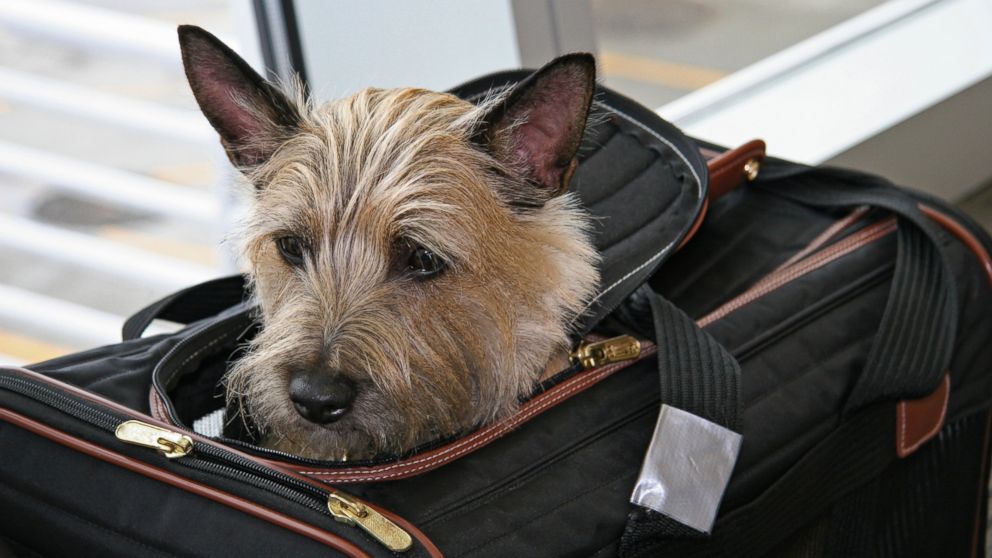Great Danes on Planes
Never put your pet through the X-ray machine.

— -- A friend of mine nearly jumped out of her skin the other day while boarding a plane. A strange little creature popped its head out of a woman’s tote in front of her. “My first thought was, I didn’t know rats came in beige,” my friend recalled. Then she realized it was a Chihuahua.
If you plan to travel with a pet this summer, there are some things you must know, including the fact that animals are generally not allowed to travel in purses. We’ll tell you where they are welcome and what the restrictions are.
A note about working animals: Guide dogs and other service animals are generally treated differently from garden variety pets; for one thing, they travel for free but not all service animals are equal. For example, United will not carry "service snakes" or spiders, but service monkeys are not a problem.
Let’s stick with cats and dogs.
1. Not all airlines carry big animals
Discount airlines are less likely to allow pets in cargo, and because in-cabin pets must fit under the seat, that means only smaller creatures will be allowed on these planes.
If Duke the Great Dane must fly with you, forget Spirit, Frontier or Southwest, which only allow smaller cabin pets.
2. Not all airlines carry all breeds
Some airlines (Delta and others), ban certain breeds from traveling in cargo, specifically short-snouted dogs like boxers and bulldogs plus cats like Persians and Himalayans. This is out of concern for potential breathing problems and the overall health and safety of pets; sadly, last year 35 animals died on journeys with U.S. airlines, 25 were injured and three were lost.
The good news is, that’s not a lot considering there were 8.5 million flights in 2015 with who knows how many pets.
3. Pets need reservations, too
Don’t show up at the airport with Fluffy in tow unless you’ve made a reservation; space for flying pets is strictly limited, and without a reservation, Fluffy won’t fly.
Call for a reservation and remember, pets don’t travel for free; fees vary from $75 (Frontier) to $200 (American and others) and those are one-way prices. Note: Pet fees can and do change without notice; look them up before you book.
4. Pets cannot roam the cabin
All cabin pets must be in carriers (again, stowed under a seat) and they are not allowed out; even if the animal misbehaves or starts making a racket, you are instructed to comfort him/her through the carrying case.
By the way, airlines have specific rules for travel carriers including size and strength requirements so be sure to check this out for both cabin and cargo transport long before the departure date.
5. Pets go through security
The TSA has lots of information about getting pets through security check-points but the main guidance is remove the pet from the carrier and walk or carry the animal through security.
Do not place the pet on the conveyor belt that X-rays your carry-on bag (yes, people have done this).
6. Where to find more tips
There are a slew of good tips online for keeping pet-stress to a minimum (the Humane Society is one such resource). Tips we like include booking non-stop flights only (which can work well with kids, too); making sure animals are micro-chipped; plastering your contact info inside and outside a pet’s traveling carrier and getting the animal used to being in a carrier a few weeks before departure.
Another recommendation: Let the pilot and a flight attendant know you’ve got a pet in cargo. It may sound silly, but last fall, an Air Canada captain who knew there was a live animal below noticed the cargo’s heater was malfunctioning and diverted the flight so a 7-year-old dog named Simba lived to fly another day.
Any opinions expressed in this column are solely those of the author.Rick Seaney is the CEO and co-founder of Fare Compare, a website that helps travelers find the best deals on flights.




